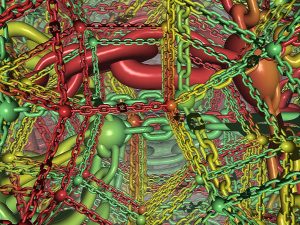
The underlying technology of the Digital Currency Revolution is something known as the Blockchain.
The Blockchain is getting a lot of attention from the financial sector, governments, and others interested in authenticated transactions, or proof of ownership, etc. There are two features that make digital currency function like it does:
- It’s distributed, meaning there’s no central authority and no central repository of the information.
- The blockchain that contains all the information on all the transactions is the actual “thing” that’s distributed.
What is a Blockchain
A blockchain is basically a database. It’s made up of blocks of transactions, each block is linked to the previous and next blocks: hence the name blockchain.
What Makes it Special?
A database of transactions is nothing new, so why are so many intuitions eyeing the blockchain for this and that? Because of the way it functions: verifying updates as valid when there is no central authority. That accomplishment is what makes it special, it’s what allows Bitcoin and other crypto currencies to function, and it’s what is changing the how the world will transact value. It’s also why the blockchain can be used for much more than digital currency – it is not restricted to financial transactions, it can store documents, files, or records of property ownership: pretty much unlimited uses.
How Does it Do That?
Without going into the technical, here’s a short explanation. There are computers all over the world running the software for a particular coin, Bitcoin for example… this creates the distributed network for that coin (each coin has it’s own distinct blockchain). These “nodes” will try to add a block to the blockchain by bundling a group of transactions into a block and then encrypting them. They don’t simply encrypt them, they attempt to do so in a particular way that’s mathematically difficult, in other words, it takes some effort. When the node accomplishes this, it sends the results to others nodes and if enough of the other nodes agree that the block is valid, it’s added to the blockchain. And here’s the other big thing: all the nodes have a copy of the blockchain, and they add the new block to their copy of the chain. So with all those copies, and with all those nodes, it’s pretty much impossible to alter an existing transaction, and it’s pretty much impossible to create bogus transactions. The nodes get “rewards” for successfully adding a block to the chain (either new coins or a small transaction fee). Each coin has its own blockchain, and can vary the particulars for how many verifications, timing, rewards, etc., as well as special features that can alter features, like what type of information it can store.
Revolution – Really?
If you understand what I’ve described, then you understand the power of the blockchain… it has the potential to change the world. We’re at its infancy: Bitcoin and the blockchain was invented in 2008 by Satoshi Nakamoto, and the first block in the Bitcoin blockchain was established on January 3rd, 2009. Governments are trying to control and regulate digital currency because they see the potential to take power and control away from them, yet they also see the power of the blockchain and are starting to investigate how the blockchain can be used to their benefit. Keep an eye on the news, you’ll see what I mean.
What’s Next?
Read my previous posts on digital currency, especially How To Safely Purchase Bitcoin and Altcoins – the best way to learn is to jump in and get your feet wet!
Until next time,
Fred

 [addtoany]
[addtoany]